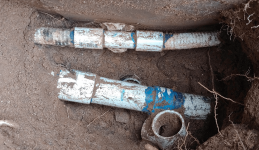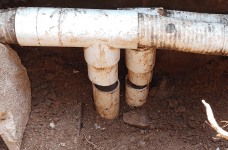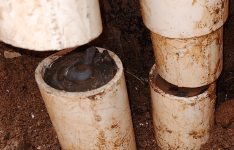Hi all,
I'm troubleshooting plumbing leaks in my inground hot tub.
I dug up one of the jets that never worked, suspecting that it's at fault.
Now I see why it never worked (although there is no leak here):

Looks like it was never hooked up, and the back of the jet is wrapped in some sort of putty. The plumbing is 2" (air) and 1" (water). An unused reducing tee was buried in the sand (2" -> 1.5")...
This is the face:

I'd like to hook it up. From what I can tell, the jets are HydroAir Micro'ssage.
While shopping for parts, I see this type of thing, which is too short for the wall:

Or this type of thing, which I don't understand:

Is that a venturi? Which one is air?
My walls are 7" thick..
Any idea how I can plumb the existing jet to the pipes? If necessary, I can probably replace the whole thing in the wall and mortar around it.
Thanks for any advice.
I'm troubleshooting plumbing leaks in my inground hot tub.
I dug up one of the jets that never worked, suspecting that it's at fault.
Now I see why it never worked (although there is no leak here):

Looks like it was never hooked up, and the back of the jet is wrapped in some sort of putty. The plumbing is 2" (air) and 1" (water). An unused reducing tee was buried in the sand (2" -> 1.5")...
This is the face:
I'd like to hook it up. From what I can tell, the jets are HydroAir Micro'ssage.
While shopping for parts, I see this type of thing, which is too short for the wall:

Or this type of thing, which I don't understand:

Is that a venturi? Which one is air?
My walls are 7" thick..
Any idea how I can plumb the existing jet to the pipes? If necessary, I can probably replace the whole thing in the wall and mortar around it.
Thanks for any advice.
Last edited:



